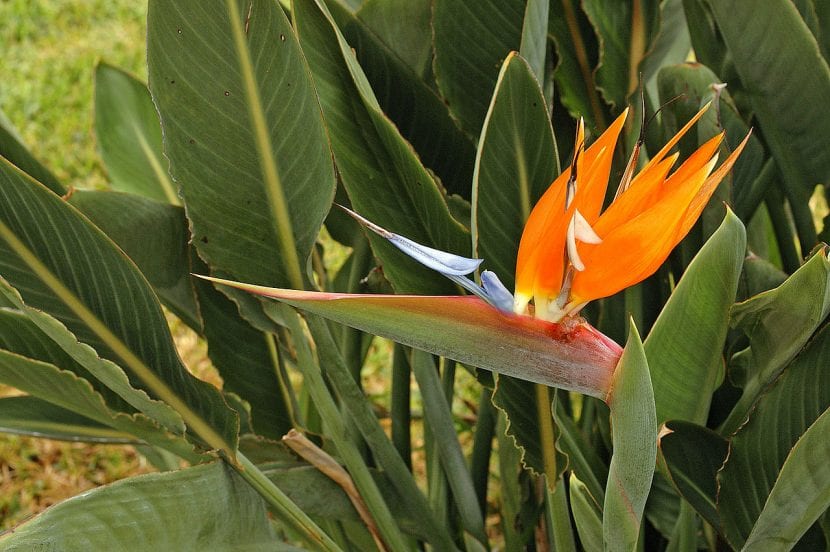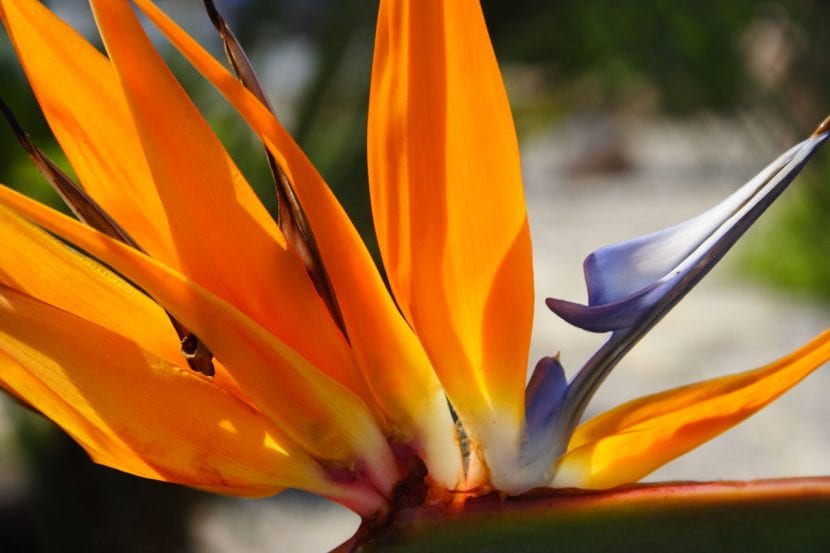
La bird of paradise flower It is one of the most curious found on the African continent. It has such cheerful and striking colors that they look great in any corner of the garden, or even the home as a cut flower.
This magnificent flower is produced by a perennial rhizomatous herbaceous plant known by the scientific name Strelitzia reginaeWhich with minimal care it will look beautiful.
What is the Bird of Paradise plant like?

This plant native to South Africa It is characterized by having long stems of up to one meter at the end of which there is a lanceolate leaf of about 40-50cm in length, with the central rib very marked and the secondary ones visible. This is leathery, dark green in color and is also perennial, that is, it lives for several years. But when it withers there is no need to worry, since the plant is producing new ones from spring to late summer.
The flowers only emerge from the adult specimens in spring and summer. They are undoubtedly the most interesting part of the S.reginae, since they are quite reminiscent of tropical birds of the genus Paradisia. They are composed of large lateral bracts (modified leaves that protect the flower), long pedunculated, and 6 tepals distributed in two groups: the three equal and free external groups, the three unequal and generally welded internal ones, and a larger one that is folded into a shape. arrowhead surrounding the style.
How do you take care of yourself?

If you want to get a bird of paradise plant, then we will tell you how to take care of it:
- Location: it must be in a very bright area, where it can be exposed to direct sunlight for at least four hours.
- Soil or substrate: it is not demanding, but it is recommended that you have good sewer system.
- Irrigation: it needs frequent watering, especially in summer. It is advisable to water it about three times a week in this season and every 4-5 days the rest of the year.
- Subscriber: From spring to late summer, fertilize with a universal plant fertilizer or with guano liquid following the indications specified on the container.
- Planting or transplanting time: in spring.
- Multiplication: by seeds sown directly in a seedbed with peat and perlite in equal parts, and by division in spring.
- Pests: it may have mealybugs, which are treated with specific insecticides or with these natural remedies that we propose here.
- Rusticity: withstands cold and frosts down to -3ºC.
The plant is pretty, right? 😉
Excellent information, complete and very practical, thank you!
Thank you very much for your words, Yamileth!